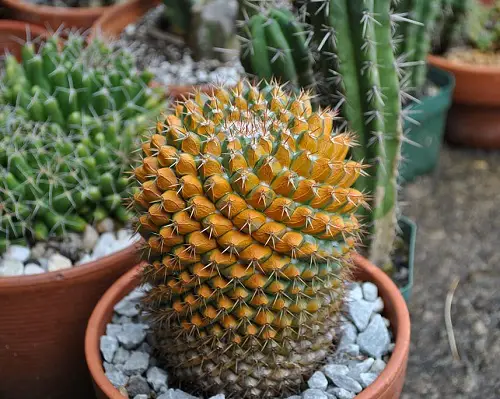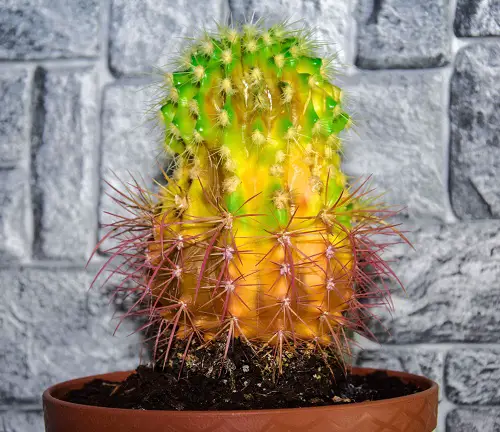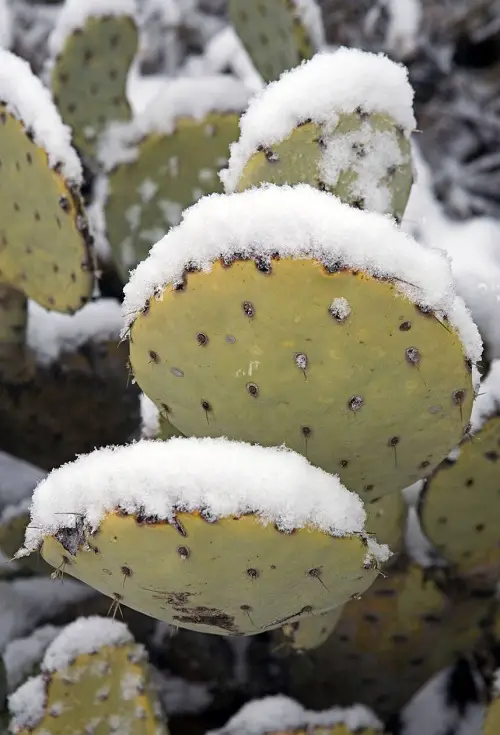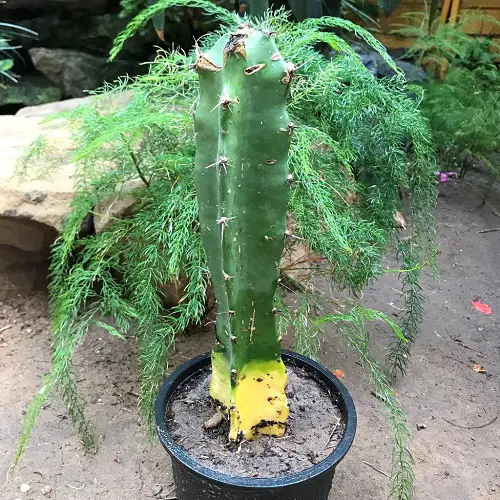Why is My Cactus Turning Yellow? What must be the reasons and solutions? If you have these questions, stay in the loop to find out!
If you notice your resilient cactus turning yellow, it might signal a problem. Read here about the top reasons and solutions to address this concern promptly!
Why is My Cactus Turning Yellow? Reasons and Solutions
1. Correct the Watering Process
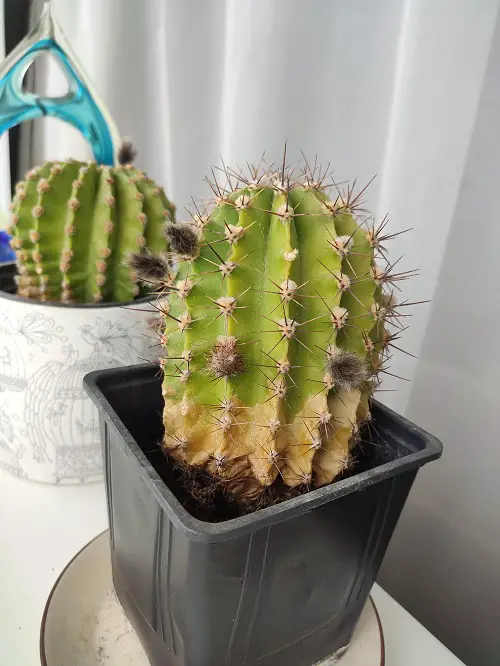
Correcting the Watering Process means checking for overwatering or underwatering. If your cactus shows a brown base and yellow stems, it shows excess supply. This can kill the plant. Additionally, you can read the general guidelines on how to save an overwatered plant.
Conversely, if it turns yellow, it’s due to dehydration. However, if plants show black roots, your plant might not be healthy again.
Solution:
Usually, you must let the soil dry out between watering or looking at the plant stems; if they appear wrinkling or thinning, they need water! Sometimes, root death is due to excess dehydration. But don’t worry—this takes months.
While watering, you must take normal water/ room temperature water and avoid cold water. Also, do not use chlorine water (most tap water containers this), as it can easily wipe out the essential microorganisms from the soil. So, you must use either tepid rainwater or filtered water.
Pro Tip: As you know, cacti are succulents. They store water in leaves and stems, and they do not require water on a daily basis, particularly if they need weekly or biweekly. You can set reminders on your phone to determine the watering interval.
2. Due to Inappropriate Location
As you know, cacti are slow growers and sun-lovers. They typically need 4-6 hours or 12 hours of sunlight exposure per day. However, it usually depends on the species. Some may need intense sun, while others can show yellow splotches, browning, or reddening due to sunburn, which can kill the plant in adversity.
Another reason could be a lack of sunlight, which hinders the cactus’s ability to produce energy and nutrient absorption (Photosynthesis), leading to overall yellowing and weakened growth.
Solutions:
To protect the cactus from intense direct sunlight, move it to a location where it receives partial shade or filtered sunlight. You can use sheer curtains, shade cloth, or place it under a shade structure to provide adequate sun protection.
3. Planted in Poor Soil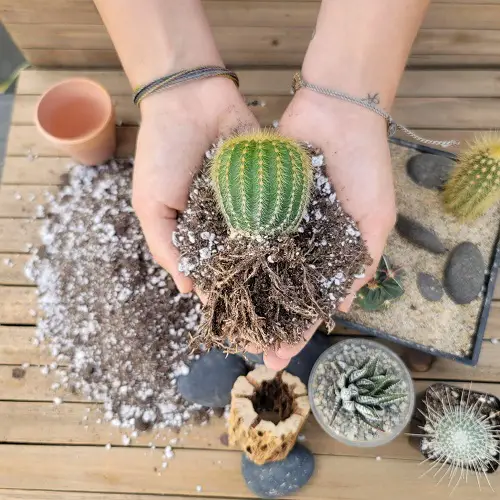
The succulents need a potting mix that is specifically designed to suit their needs and has a fast-draining medium. If you are giving them a standard one, it can be problematic and lead to root rot and yellowing of the cacti.
Solutions:
You must use ready-made soil made for cacti only, which you can easily find in garden centers or plant nurseries. You can also DIY at home by mixing potting soil, sand/grave, and perlite or pumice in a 3:3:2 ratio.
4. Installed in a Small Container
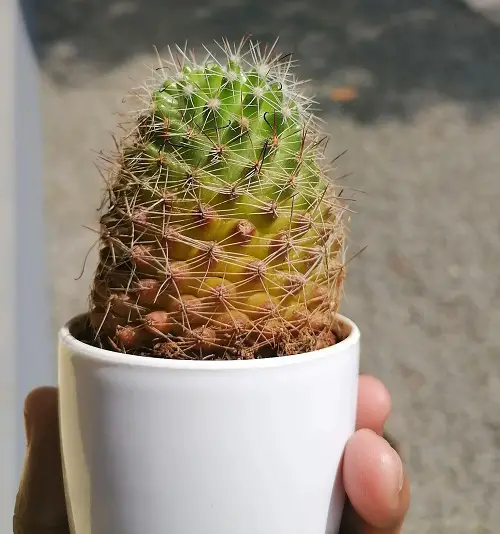
If you notice your cactus has become more extensive and its roots are restricted or crammed in the container, it leads to poor nutrient uptake, eventually resulting in yellowing.
What to Do:
Simply repot it into a larger container than the previous one with a proper drainage facility, and do not forget to provide the appropriate soil conditions as mentioned above. Also, you can get help from here in deciding the pot sizes from inches to gallons.
5. Nutrient Deficiency
Generally, cacti outdoors do not need additional nutrient uptake. But indoor potted ones sometimes show nutrient deficiencies, and a lack of them causes yellowness in your plant.
Solution:
During the growing phase, it would be great to fertilize indoor varieties once a month with one that has more phosphorous than nitrogen. You can also check the best fertilizers!
6. Ageing Can Be a factor
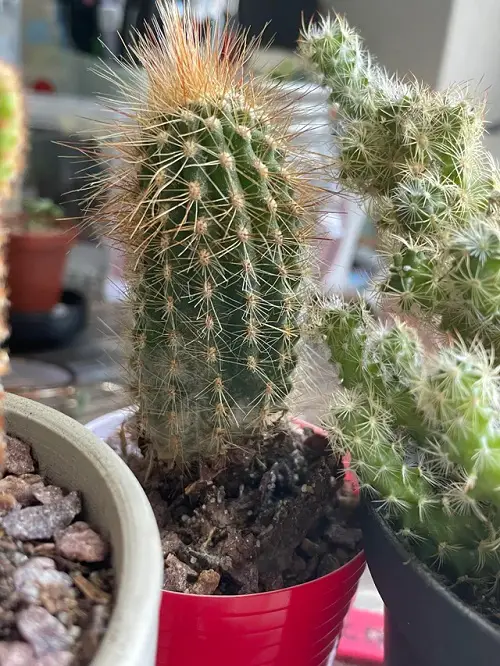
It is normal for cacti to age, as the plant’s older leaves naturally turn yellow and die off, followed by new growth.
Solution:
In this case, you must do good research on the species or ask a professional for guidance. Keenly observe the plant; if it appears healthy, the color change is likely normal.
7. Frost Damage
Yellowness can result from damage to the outer layer caused by freezing temperatures outdoors. Its prolongation can be fatal for the plant.
Tip:
So, to protect your cacti from cold snaps, keep them indoors.
8. Pest Related Problem
These succulents are not easily subjected to pests, but sometimes you can spot insects like spider mites, mealybugs, or aphids, which can lead to yellow spots near or on the stems.
What to Do:
There is not much; you only have to inspect your plant, and if you find any signs of these insects, wash away them with a blast of water. Alternatively, you can learn the natural pesticide recipe here!
9. Diseases
When your cactus starts turning yellow, it might be a sign of trouble. One common issue is a fungal infection called Cephaleuros wilt. This infection, caused by a fungus called Verticillium dahliae, messes with the plant’s water pipes, making it hard for water to move around as it should.
Another reason for yellowing is chlorosis, which is when the cactus doesn’t get enough iron. This happens a lot with cacti and succulents. It makes the plant look lighter green with little brown spots. Usually, it’s because the plant isn’t getting the proper nutrients from the soil, which can happen if you water too much or too little.
Solutions:
If you don’t do anything about these problems, your cactus will die off.
But there’s hope! You can save your cactus by giving it a fresh start. First, move it to new soil that drains better. Then, trim off any dead roots with some scissors. Finally, make sure it gets plenty of sunlight right away to help it grow back strong and healthy.
10. Temperature Fluctuation
Sudden temperature changes commonly cause a cactus to turn yellow and can happen when transplanting—particularly when reporting or changing the location. Also, if placed near a heat source like a heater.
Solution:
Move the plant gradually to its new location with less root disturbance, wait for the roots to settle down, and then water—usually, a week will be enough!


